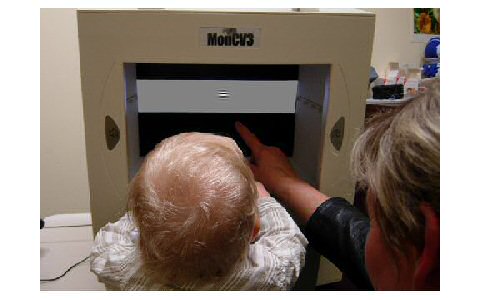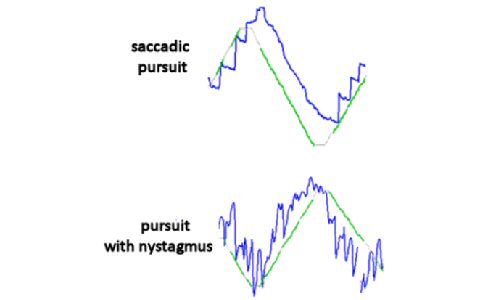Baby vision test by Metrovision
- Home
- Visual function tests
- Eye movements
- Baby vision test
Introduction
The purpose of this test is to estimate the visual acuity of children at the non verbal ages.
This test is similar to the preferential looking test: it is based on the baby behavioral response to the presentation of a visual stimulus.
This technique presents several advantages:
• it provides an objective response based on the measurement of eye tracking movements,
• it implies « central » vision,
• it is time effective,
• it can be used at the youngest ages
Visual stimulation
A small grating is presented on the stimulation screen and is made to move at a slow velocity.
Visual acuity is estimated from the highest resolution of the grating that the subject is able to track.
Examples of the tests presented on the stimulator screen and corresponding to different visual acuities are presented hereby.
This test is available on the Moncv3 and MonPackONE systems.
Recording of the eye movement response
The equipment includes an eye tracker that analyzes the image of the baby’s face in real time. A reflective dot positioned over the forehead is used to determine the head movements. Eye gaze movements are measured from the position of the pupils relative to this reflective dot.
Results from normal subjects
Even the youngest babies can follow a moving target provided that they are awake and that the stimulus movement is slow enough.
The results hereby have been obtained at different ages. The movement of the stimulus is indicated in green color
whereas the eye tracking movement trace is shown in blue color.
Examples of examination result
This test can also provide information on delayed maturation of the eye movements and document eye movement disorders.
References
PDFClinical usefulness of the baby vision test in young children.
PDFEvaluation of spatial discrimination capabilities of newborn infants using the visual tracking response of patterned stimuli.
PDFThe development of visual pursuit during the first months of life.
PDFComparison between grating acuity measured by visual tracking and preferential looking in infants.
PDFSmooth pursuit in infants: maturation and influence of stimulation.





